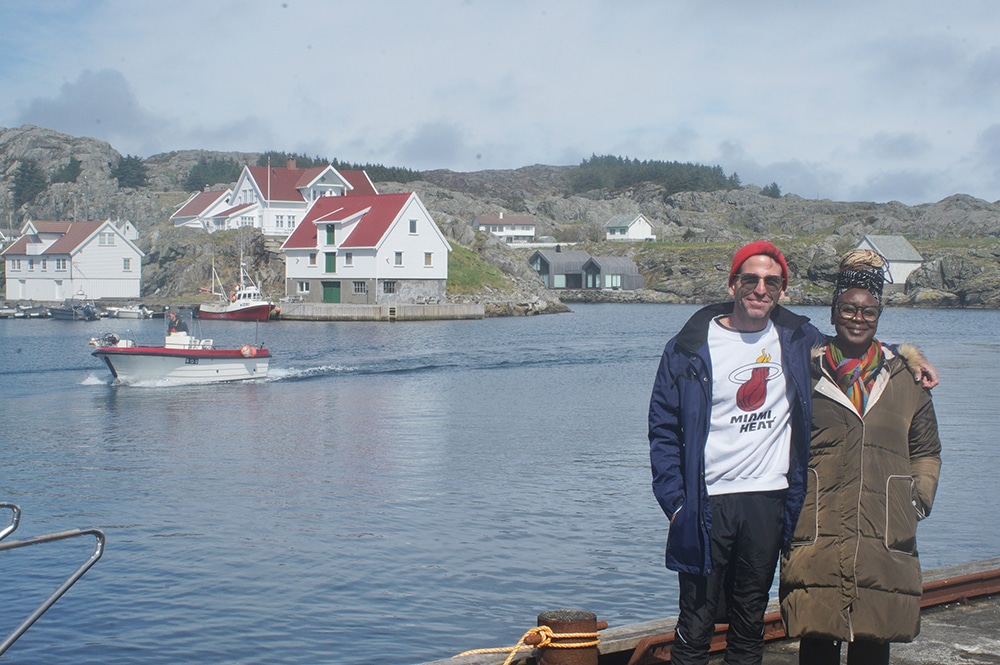HJ: This interview will focus on the recent residency project Heat Exchange. But first, for our readers who are not familiar with you, can you please give a brief introduction to who you are and how you see your position in the art world?
NF: I am an artist, curator, and the director of a non-profit alternative art space that I cofounded in 2004 called BFI – Bas Fisher Invitational. I’m juggling the artist’s life of wearing many hats. While I’m simultaneously working hard on directing BFI and our new residency program, I’m also an artist. I see myself primarily as an artist but also equally as an advocate for other artists. I do that through the alternative art space that I run in Miami highlighting emerging and lesser-known artists, and by advocating for artists rights. BFI was the first WAGE certified space in Florida. Even though we are a tiny, low budget art space, we still prioritize artists’ fees in a way that many larger institutions don’t.
HJ: Non-American readers might not understand the significance of WAGE. Can you quickly define WAGE and describe its importance for artists in the United States?
NF: W.A.G.E. (Working Artists in the Greater Economy) was founded to highlight the fact that artistic labor is work which deserves financial compensation, and has been shifting the perception of art being only for the privileged with compensation paid in “exposure.” One of their most successful endeavors was starting a certification process for institutions, where their annual budget is audited. If the institution paid artists fees in proportion to their annual budget, they would become “WAGE certified.” This process allows audiences, funders, and artists to know which institutions truly prioritize artists, and has helped normalize asking for an artist fee in the United States.
I’m proud to have been a part of this dialogue before WAGE existed. BFI paid artist fees before there was even a system to recognize this, and was part of a community that was trying to find ways to make this happen on a broader scale. Artists K8 Hardy and A.L. Steiner did a talk at BFI discussing the seeds of WAGE, and as soon as WAGE had a certification process, we immediately started the process of certification, becoming the first organization to be certified in Florida.
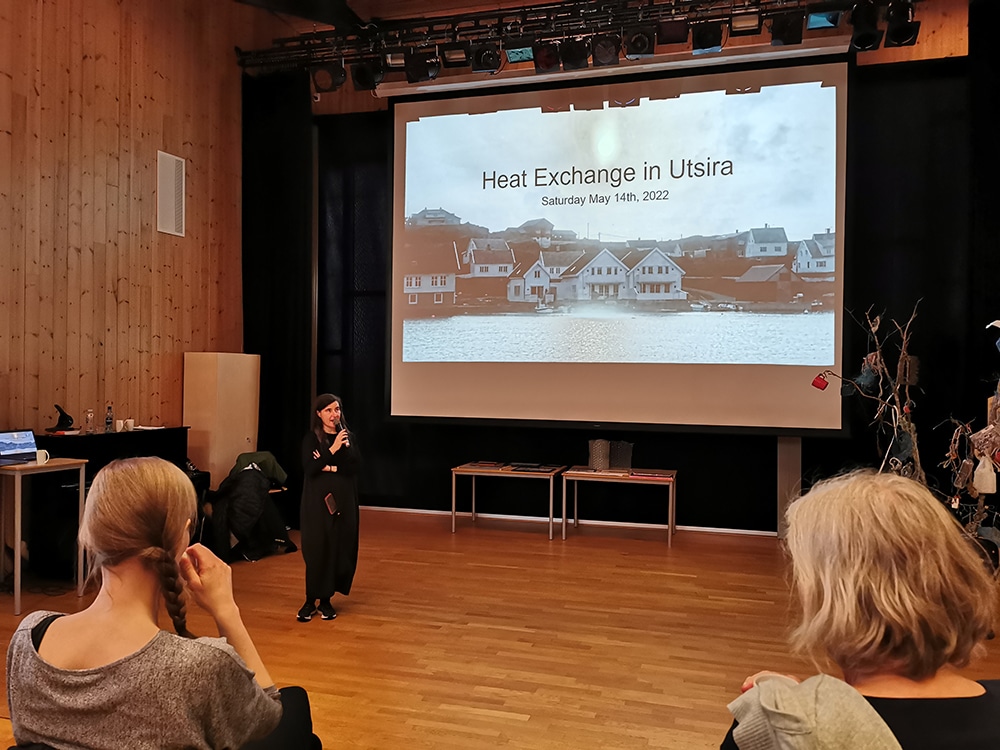
HJ: Before we go on, can you tell us more about the history of BFI?
NF: BFI stands for Bas Fisher Invitational and is a small, artist-run art space based in Miami, Florida, the city where I was born and grew up. When Hernan Bas and I founded it together in 2004, we didn’t intend for it to be a 17-year long serious project. We simply wanted to pass on a generous gesture. An art collector and real estate owner, Craig Robbins, gave us a gigantic studio space for a minimal art trade. At that time, Hernan and I were gaining more international acclaim and we were confused why some of our mega-talented friends were not getting the notice they deserved. So we built out the front of our studios to become an exhibition space.
Through that simple action, many of our peers that we exhibited went on to receive greater recognition, which gave our process external validation, which then helped us receive funding. The space has gone through several iterations. At a certain point the space just became me and a few other artists. At a different time I ran it with another artist, Jim Drain. There was a time when an artist now based in Oslo, Agatha Wara, was a part of it. Katja Rosenthal, who now has a great gallery in Miami, was part of it for a bit. Lee Pivnic, BFI’s former operating manager, just received a big grant for his own incredible projects and moved on to focus on that. Many amazing people have come in and out of that circle.
We started receiving funding in 2008 after existing for about 4 years, and we were under the fiscal sponsorship of a non-profit called the Miami Foundation. In 2015 we became a 501c3 on our own, which is the legal designation in the US for a charitable organization, and this made BFI eligible for a higher level of grants. Since then we’ve received several grants from the Warhol Foundation, the National Endowment for the Arts, and others. It’s validated our work on a national level.
HJ: At what point did you incorporate a residency into BFI’s program?
NF: This is the first time! When considering BFI’s programming, one of the most important things I think about is what artists want and need to continue to develop their work. And I’m always looking for opportunities for collaboration. BFI is so tiny. We have a miniscule budget and miniscule staff. So we’re always looking towards partnerships and collaborations as a way for our organization and other artist-run spaces to survive and thrive.
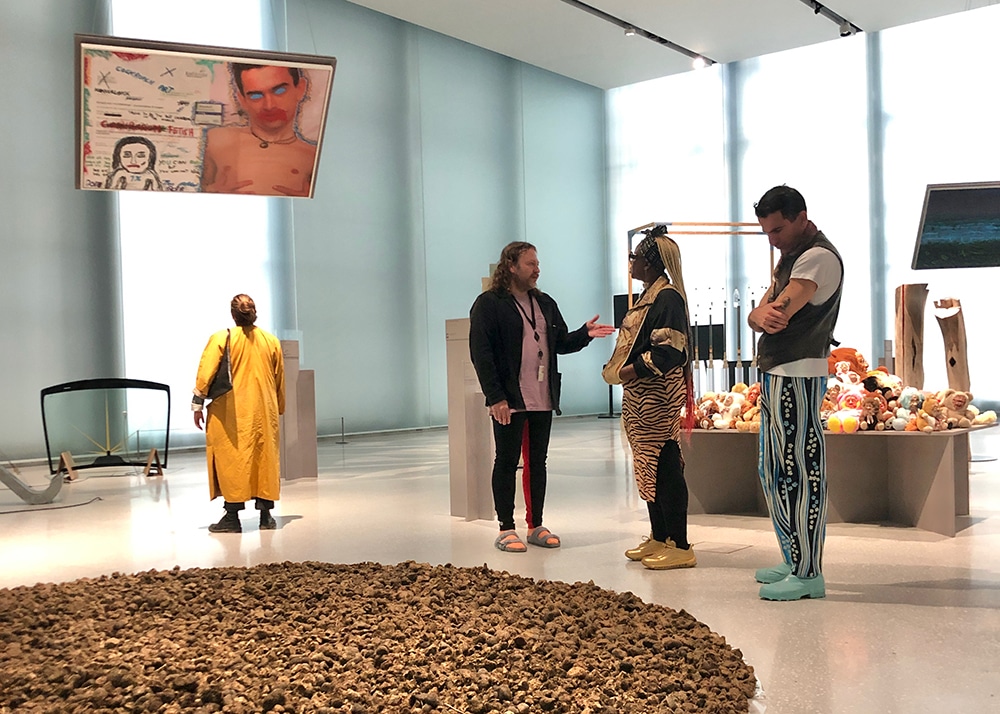
HJ: How did the idea for this specific residency exchange between Miami and Stavanger come about?
NF: In 2014 I was invited by then-director Geir Haraldseth to do a residency at Rogaland Kunstsenter. I spent a few months at Frida Hansens Hus, during which I got to know Stavanger, the logistics of the Kunstsenter, and artists working in the city. Many of those friendships were impactful and have stayed intact.
Especially important was meeting artist Siri Borge, who was part of the artist-run space Studio 17. We had similar experiences in that we were both artists, both part of artist-run spaces, and both had creative practices deeply committed in social change. We had different approaches, but we both held and continue to hold a core premise that we have to make art, but we also have to create societal change, and that isn’t always possible through individual art making. She and I really bonded over these kinds of issues. Together we questioned the social and economic systems for art in our respective countries. She described the push for artists in Norway to professionalize, while I lamented on the lack of funding and any kind of safety net for artists in the US. We wondered what our systems might learn from each other.
In 2019, Siri and I attended a residency together at the Kunstkvarteret Lofoten, and the seeds for this exchange were planted during conversations that she and I had together. We both realized how important it is to witness other systems, even when they’re not easy to replicate in our own. Because there’s always a spark, a different perspective, that may help you address a challenge you’ve been facing.
HJ: How did all of these ideas coalesce into a residency project? What format did it take?
NF: The project is called Heat Exchange: Art and Infrastructure from the Tropics to the Arctic. Rather than a production residency, it’s a research residency for artists, and particularly for artists whose practices expand to include advocacy, social practice, and the utilization of art as a tool for creating change.
HJ: Logistically speaking, what did this residency look like? The format is really unique. Can you describe the framework before going into more detail?
NF: The residency was formatted as an exchange. Three artists were selected from Norway to come to Miami, and three artists from Miami were selected to come to Norway. The idea was for the residency to enable both sets of artists to have an extended stay in each city and see how their respective systems and arts industries function. The artists from Norway came to Miami in July of 2021. The Miami artists were scheduled to come to Norway in May of 2021, and then if got shifted to October, and then the Covid Delta variant happened and the borders were closed, so we ended up coming in July of 2022, a full year after we originally planned.
As I mentioned earlier, collaborations are key to BFI’s programming. For the residency we collaborated with another residency program in Miami called the Fountainhead. So they provided the space for the artists to stay. And in Stavanger, housing and infrastructural support was provided by the Rogaland Kunstsenter. Both BFI and Rogaland Kunstsenter applied for grants in our respective systems and both received support.**
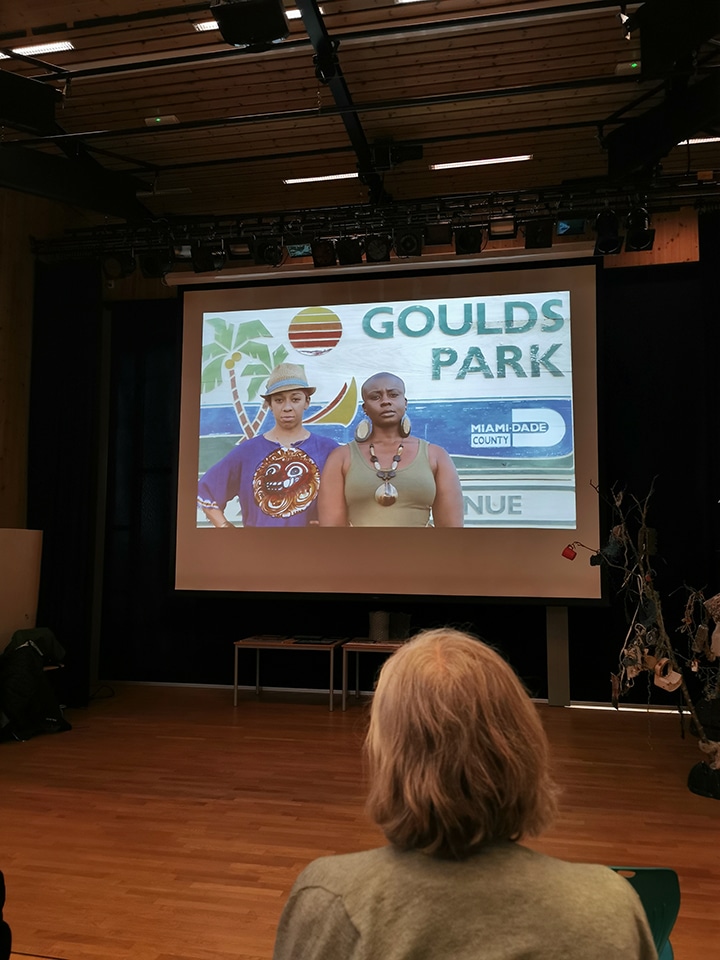
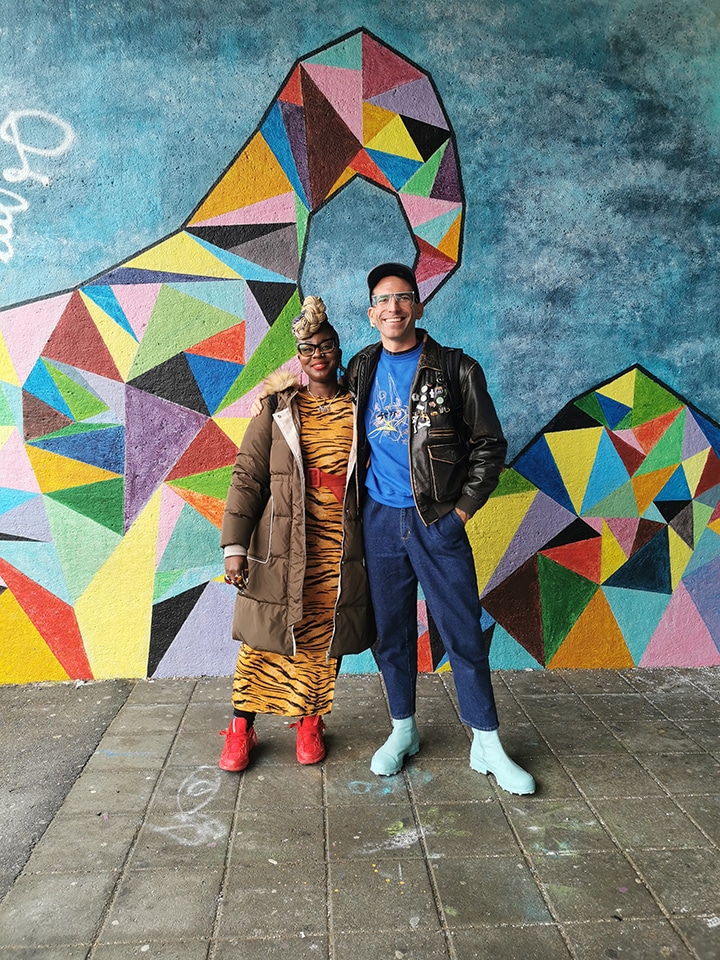
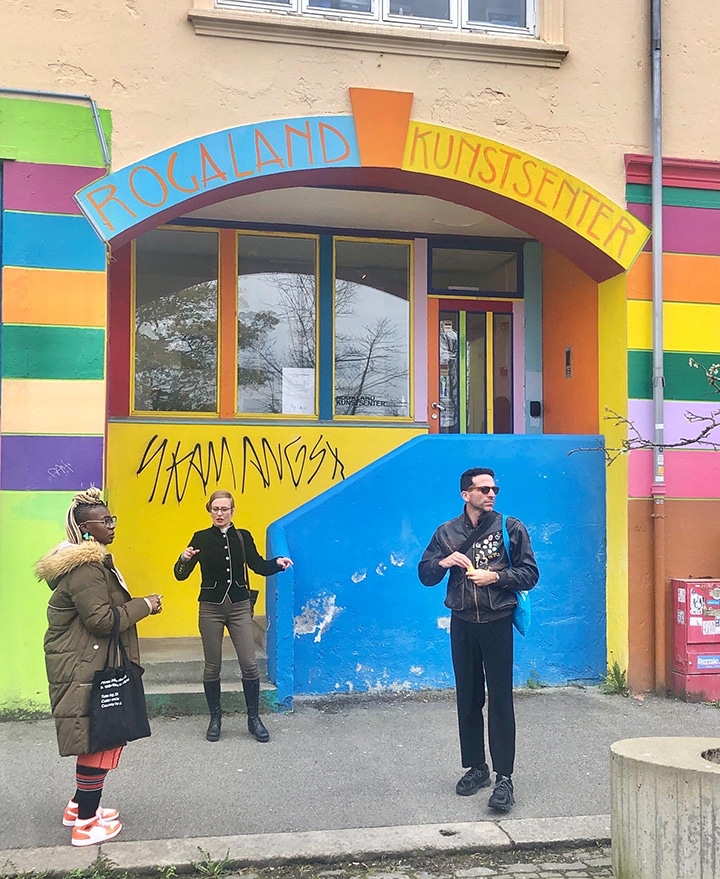
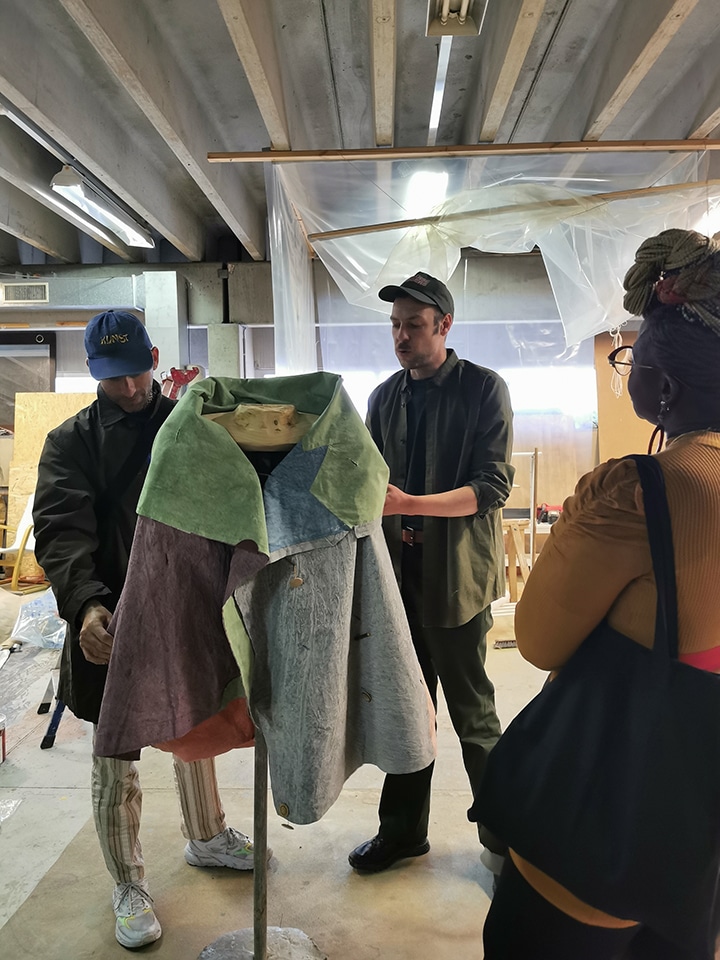
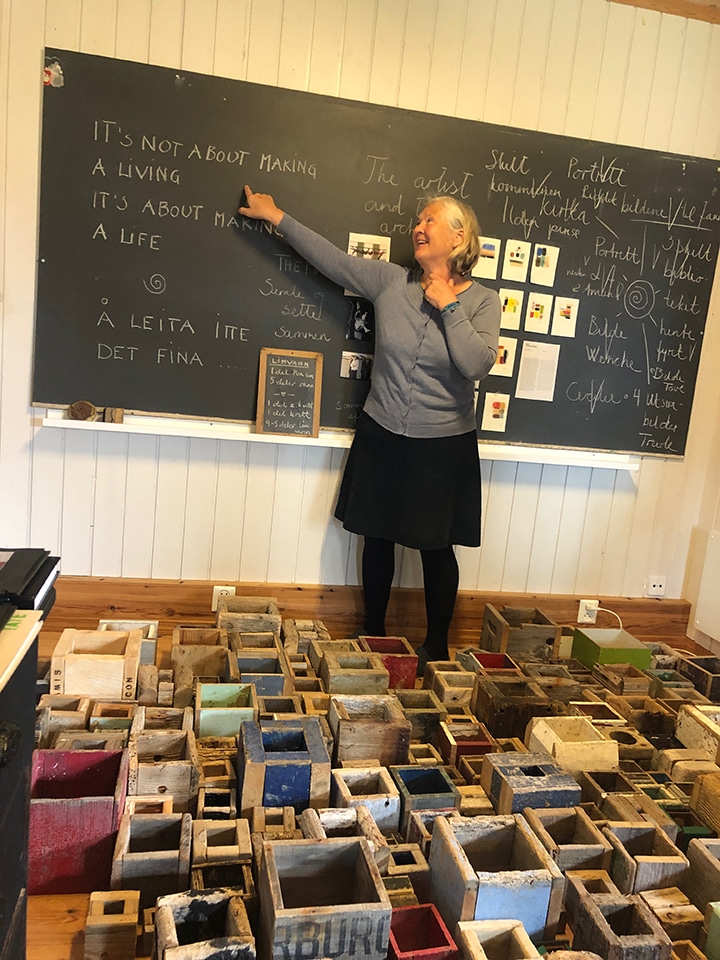
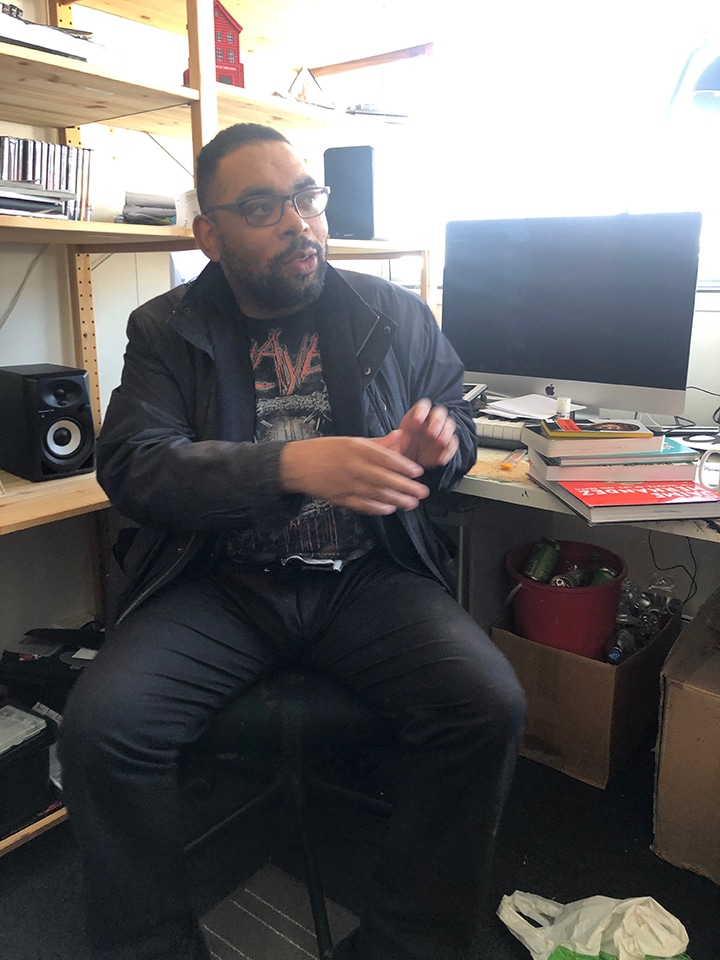
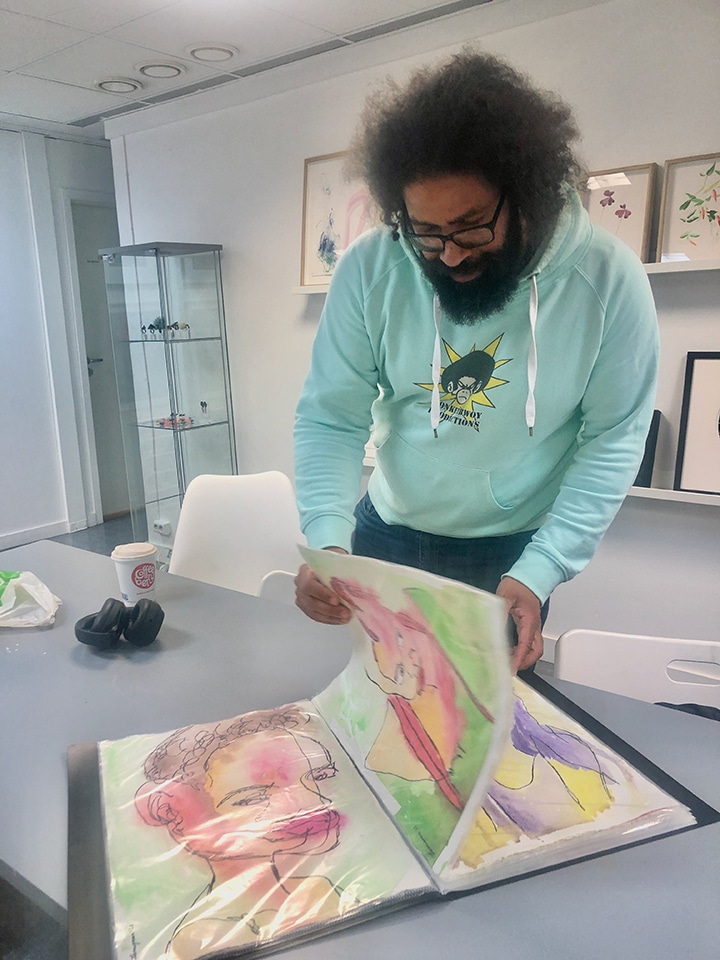
HJ: Who were the artists and how were they selected?
NF: The artists were selected by nomination and invitation, via a panel. The panel consisted of Geir Haraldseth the former Director of Rogaland Kunstsenter, Jane Svederup, the current director of Rogaland Kunstsenter, independent curators Anna Frost and Cece Moss were also advisors, as we wanted our selection panel to consist of people knowledgable in the nuances of both Scandanavia and the United States.
The Norwegian artists that were selected to come to Miami were Siri Borge, Hanan Benemmar, and Máret Ánne Sara. The Miami artists that came to Stavanger were Loni Johnson, Misael Soto, and Reverend Houston Cypress of the Otter Clan of the Miccosukee Tribe of Indians of Florida. We focused on selecting artists who see advocacy and activism as integral to their practices. We wanted a variety of issues to be represented, and yet still have certain topics and methodologies that could be shared and mirrored between the artists.
HJ: I know this is an impossible question, but in order to give some context, can you briefly describe the practice of each artist?
NF: Absolutely. I’ll speak about the artists from Miami first. Loni Johnson’s personal practice deals with shrines and creating monuments to the lives of families. Her more expanded projects often deal with youth outreach, specifically related to gun violence and police brutality in America. As an example, she and Hattie Mae Williams created a performance in which they cleared the energy at a basketball court in Goulds, a specific location that has dealt with repeated incidents of gun violence. In the middle of the performance, the blue sky turned black and there was a thunderstorm. The audience stayed in the pouring rain, because the performance was so powerful. When the performance ended, a rainbow came out. It was one of the wildest things I’ve ever experienced!
Loni also collaborates with the Perez Art Museum on a project called Art Detectives. The project brings law enforcement officers and youth to the museum, leading them to interact and make art together in response to the exhibitions. These meetings serve as a way to help break down assumptions by police officers of teenagers as trouble, and conversely help teenagers see law enforcement as something that they can interact with. Johnson is enabling these really subtle levels of change, one person at a time.
Misael Soto was the artist in residence for the City of Miami Beach for two years, working primarily with the Department of Sustainability in Miami Beach. Miami Beach is a city that has “sunny day flooding,” meaning when the tides are too high, even with no rain, there can be flooding. This problem is being engineered away (the city has a complex pump system that pumps water away from the streets) thus disguising the real problem – climate change. Soto’s work finds ways within and mimicking bureaucratic systems to reflect back upon the government who they are and what they’re doing – hence their project is called The Department of Reflection.
Rev. Houston Cypress of the Otter Clan is a member of the Miccosukee tribe of Indians, currently living on Miccosukee land. They are non-binary and coming from a Native American tradition, consider themself two-spirit. Cypress is a LGBTQ+ activist, a water rights activist, a poet, a filmmaker, and an artist. They also have a project called Love the Everglades, which is an organization that raises awareness about environmental issues in the Everglades.
And now for the Norwegian artists. Siri Borge and I hatched the original idea for the residency, so it was imperative that she be a part of this pilot program. Her work as an artist, activist, and now as an elected official, was absolutely key for our understanding of the issues and nuances in art and infrastructure within Norway. Her work humorously pokes at the fish and oil industry, Norwegian culture, and other sociopolitical factors. At NADA we presented artworks she made utilizing stained glass techniques, one of a Norwegian Cod fish, another of a stinging jellyfish commonly found on beaches in Miami, the beautiful craft preservation of animals was further enhanced by her performance on the NADA stage on opening day, A Requim for a Reindeer, where she made beautifully haunting music on a theramin while wearing a plastic reindeer mask.
Hanan Benammar’s work often critiques surveillance. Her play Ways of Seeing, which upset a Norwegian politician’s wife, created an intense media backlash. This conflict, and the publicity surrounding it, is a vivid counterpoint to the common assumption that in Norway, artists and freedom of speech is 100% protected. She offers a critical perspective on what it means to be an artist in Norway that is not an ethnic Norwegian, and what kinds of challenges that brings. The Miami group was able to attend her newest work’s premiere in Ås, Le ‘Arbre à rumeurs, where a group slowly walked 2 meters apart through an arboretum, deeply listening to nature, before arriving to an amphitheater-like section of the forest, where a performance playing with ideas of a botanist observing tree structure took place.
Máret Ánna Sara is a Sami artist living in the north of Norway. Her work focuses on the land rights of her people through the creation of visceral sculptures, installations, performances and protests. Her practice is extremely powerful and very much in parallel with the kind of work that Houston Cypress is doing in Florida. It was very important that we included indigenous voices on both sides of the project. During our preview tour of the new National Museum with Geir Haraldseth, we were all blown away to be greeted by her monumental work Pile o’ Sápmi Supreme, a wall work of what felt like hundreds of skulls with bullet holes in them, the final form of an artwork utilizing the heads of Reindeers that herders were forced to kill to cull their herds in an ongoing dispute about indigenous land rights. Its one of the most powerful artworks I’ve seen. I’m so impressed that the museum chose such a powerful statement as the first thing you see when you walk into the new building.
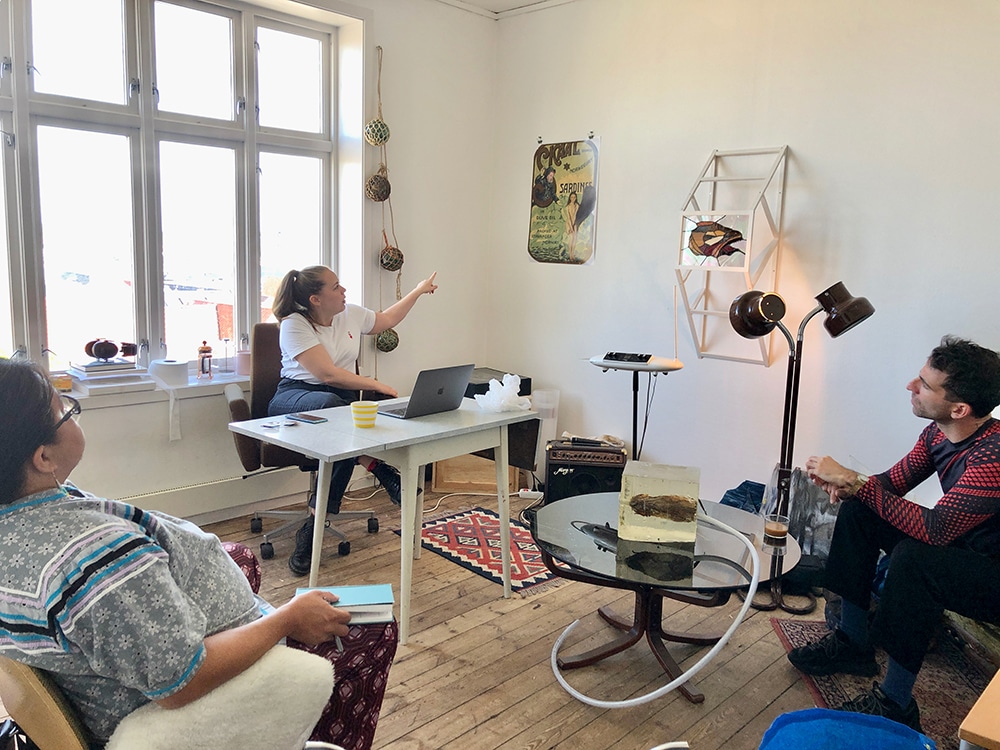
HJ: Earlier you mentioned that the main purpose of Heat Exchange was to allow artists to understand how art functions in different parts of the world. How was this accomplished?
NF: The premise was that artists would have meetings with representative examples of how each city or art system functioned. For example in Stavanger, we met with Hans Edward Hammons on two occasions: one wearing the hat of the “artist”, and two wearing the hat of the “BKFR union board chair.” So we got to see how he works in two very different contexts. We met with Linnéa Blakéus Calder who is active with Norske Kunsthåndverk, the Aritst Craft Union, and is part of the group that worked to secure Tou Scene as an art space. We met with Per Arne Alstad, the CEO of Tou Scene who gave us a tour and explained the history of the space and its evolution. Loni Johnson is invested in youth outreach, so we toured Metropolis, which is a cultural space for young people in the city. We met briefly with Kristina Ketola Bore, a curator at Kunsthall Stavanger. We visted Haua for the Velferden Open Day, where there were multiple art installations and performances, alongside community building food and bike racing events, which brought out families and town residents of all ages. We also visited artists like Sandra Vaka Olsen, Frode Felipe Schjelderup, Anette Gellein, David Lamingnan Larsen (who we were all so impressed won an award in Sandnes for working with children to envision public art), and Siri Borge of course – without her collaboration, insight, organizing visits, and hosting us, none of this would have been possible. She even organized an intimate 17th of May celebration that incuded many intereresting people from the Stavanger art scene.
Jane Sverdrupsen at the Rogaland Kunstsenter was crucial in facilitating this, presenting artist talks in both Stavanger and Utsira, hosting various meetings there, organizing great visits such as an afternoon and lunch with Stavanger Museum director Hanne Beate Ueland, helping secure funding and housing and travel and so much more. There were so many pieces that came together to make this happen, and having a great collaboration with Rogaland Kunstsenter was critical and deeply appreciated.
In addition to our time in Stavanger, we spent a week on the island of Utsira, the smallest municipality in Norway with a population of 190. In addition to being a famous place for migratory birds, they also have commissioned street art installations, and have an active art residency program and so much cultural support. We spent time with the Head of Environment and Agriculture, Atle Grimsby, did a studio visit with Marit Eide Klovningwho painted portraits of every woman in the island in honor of the first female mayor in all of Europe being elected in Utsira! We visited an open day at the school and met Joakim Lund, who is both and artist and the school principal.
In Oslo we met with UKS director Miriam Wistreich and UKS board chair Steffen Hundlykken to learn more about artist unions, visited the Sámi House, had a preview tour by Geir Haraldseth of the expansive inaugural exhibition he co-curated in the Light Hall, I Call it Art; did studio visits with Elina Waage Mikalsen at the Kunstnunerhus, Maya Økland at Tenthaus, artists and curators Thale Blix Fastvold and Tanja Thorjussen of Locus, who are on the boards of Forbundet Frie Fotografer and Tegnerforbundet…We did so many meetings in Norway that it would have been hard to do more than we did!
We worked to better understand the many roles of artists and how infrastructure is developed. Many artists are on boards of organizations and involved in curatorial projects. In the U.S., it is rare for a board to be made up primarily of artists, or to have artists be on panels to select public art commisions, grants, and awards, but it is the norm in Norway, which allows the true needs of artists to be centered. In the U.S. it is more common for the conversation to be centered on percieved needs of artists by philantropists, collectors, or business leaders, who tend to focus on market sucess and collection building. Another realization is how artists are present at city commision meetings as part of their union duties, and politicians are reguarly engaged and present at art functions. Speaking to Miriam at UKS, we were all struck by how much data has been generated over decades analyzing artist’s conditions and economic struggle, as well as data showing how much impact the arts has had on bettering communities. Strategies to show the importance of art in clear and justifiable ways was very inspiring.
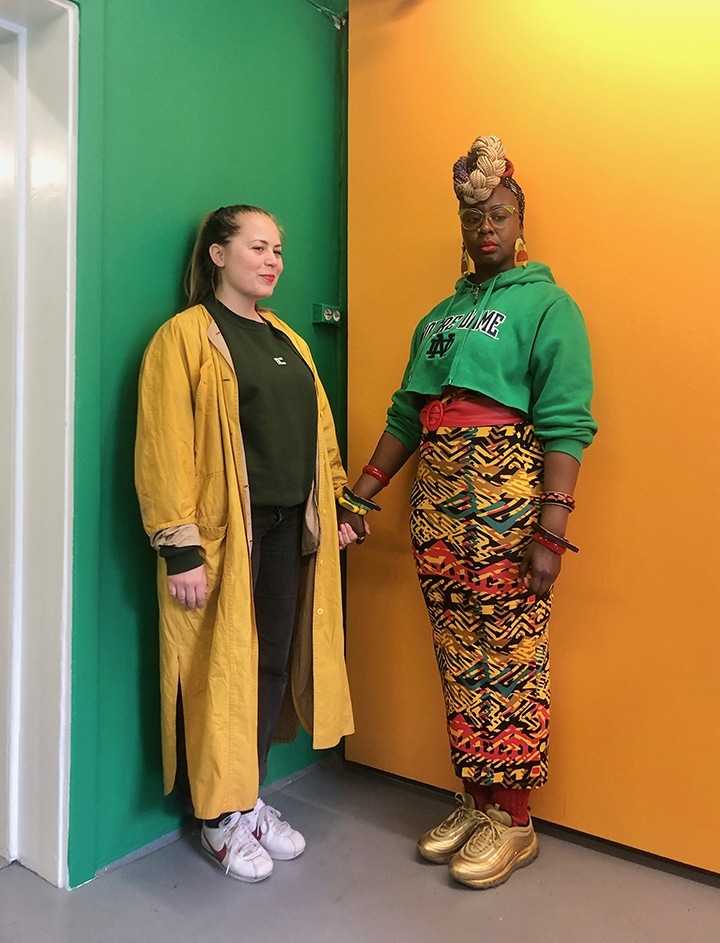
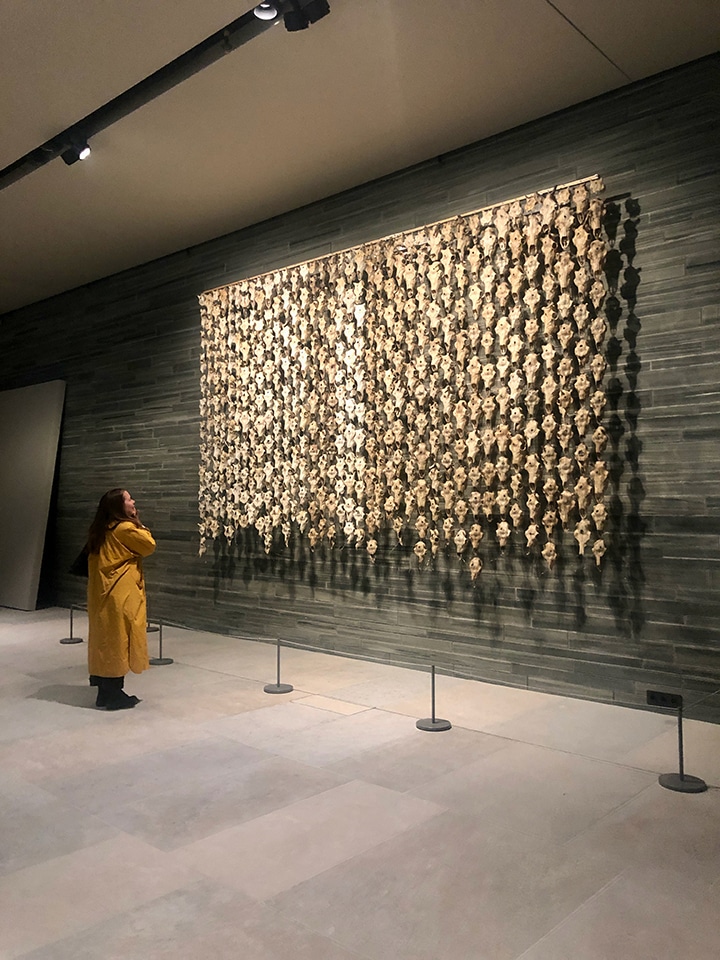
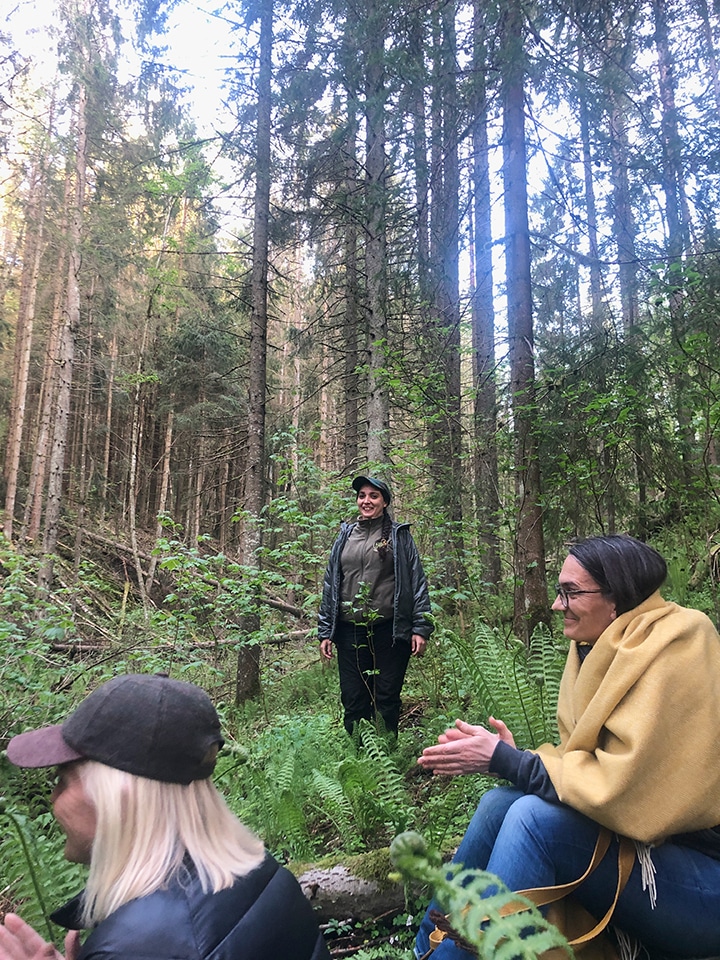
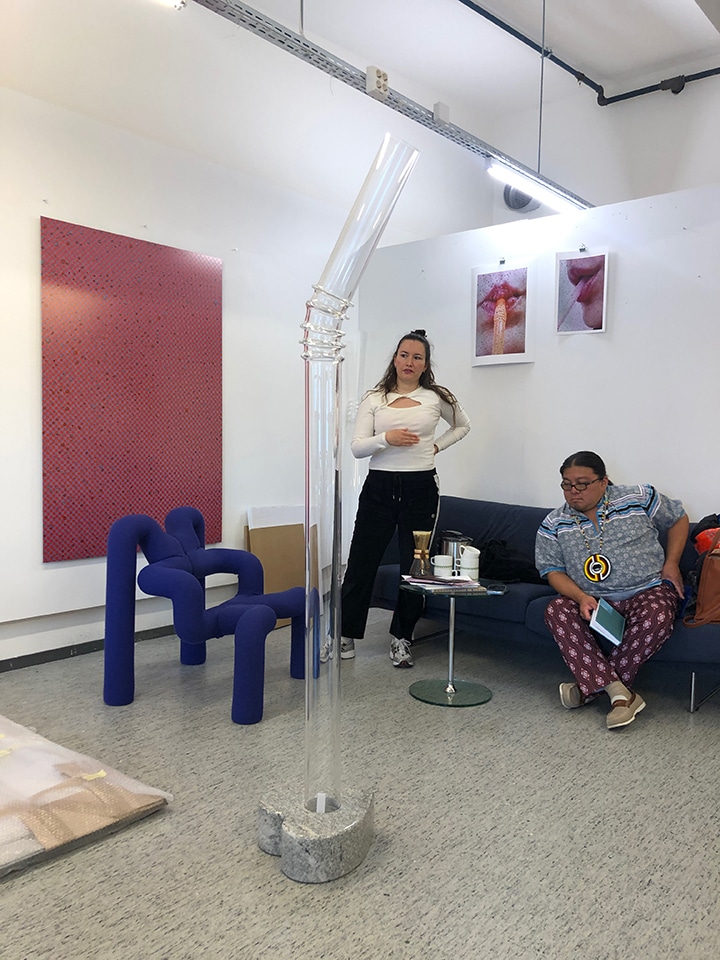
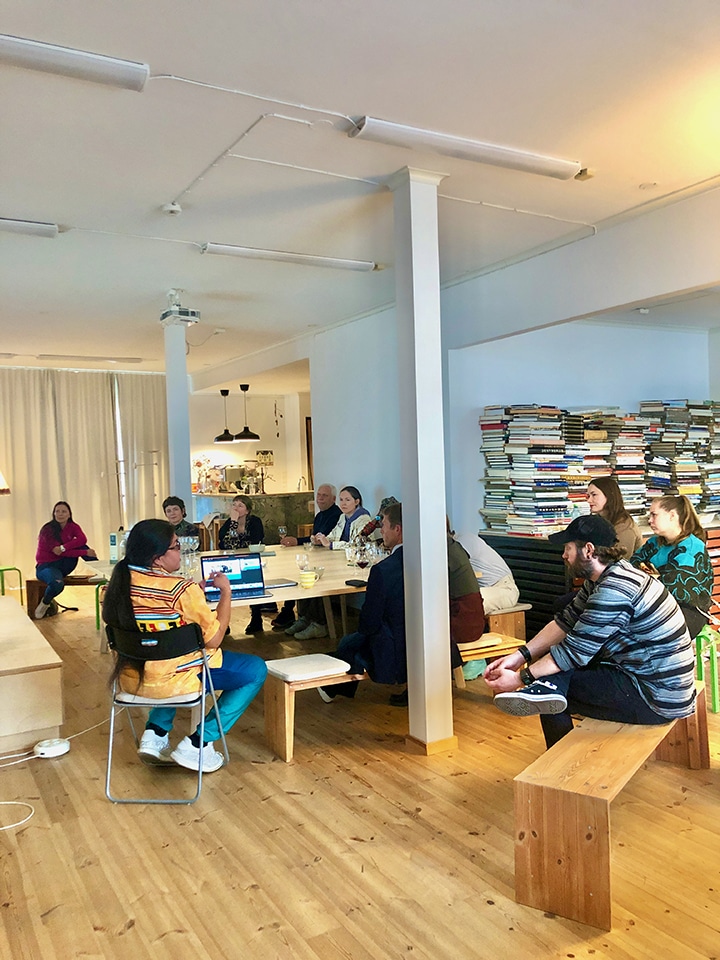
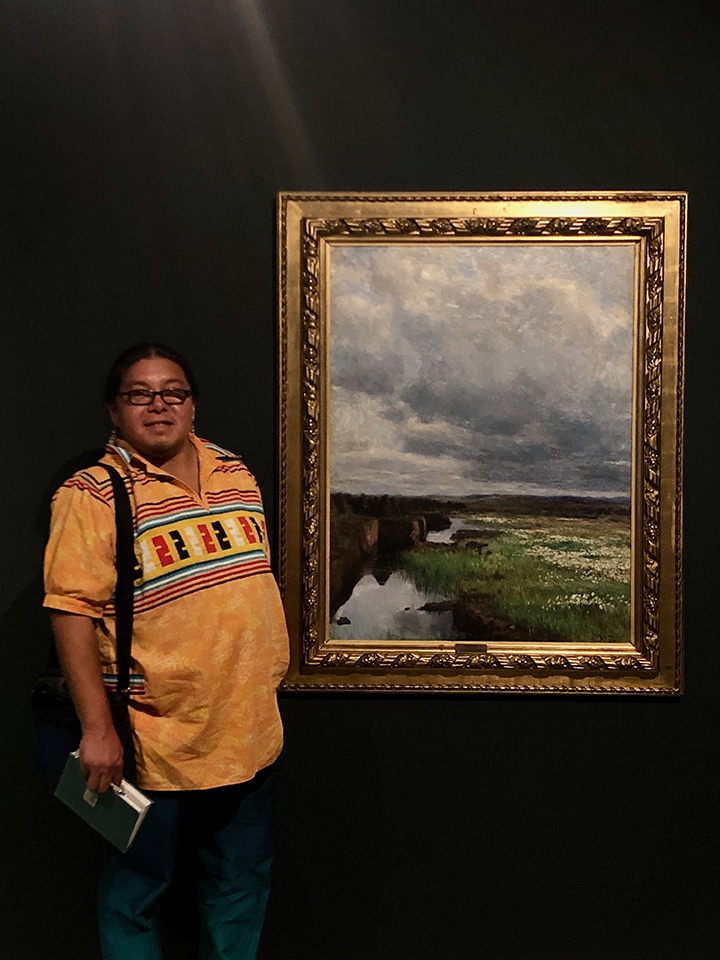
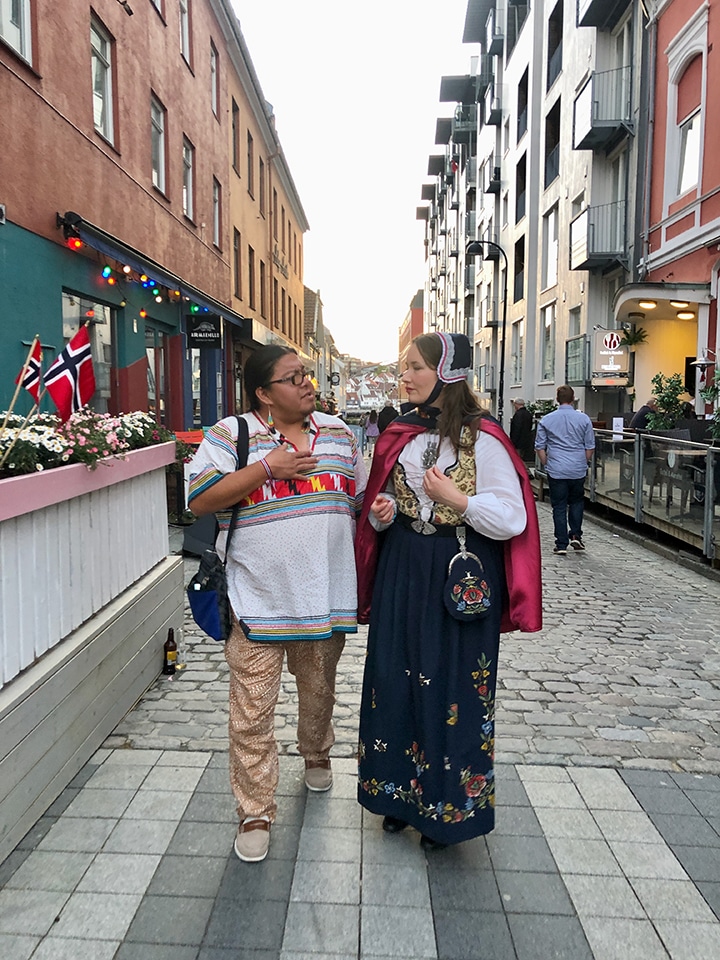
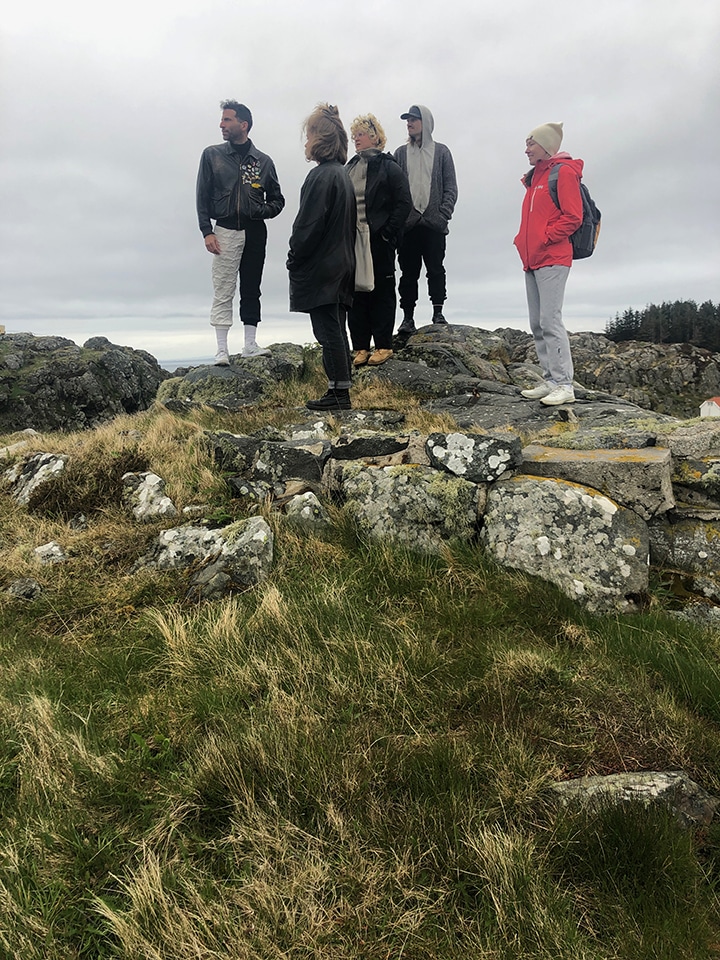
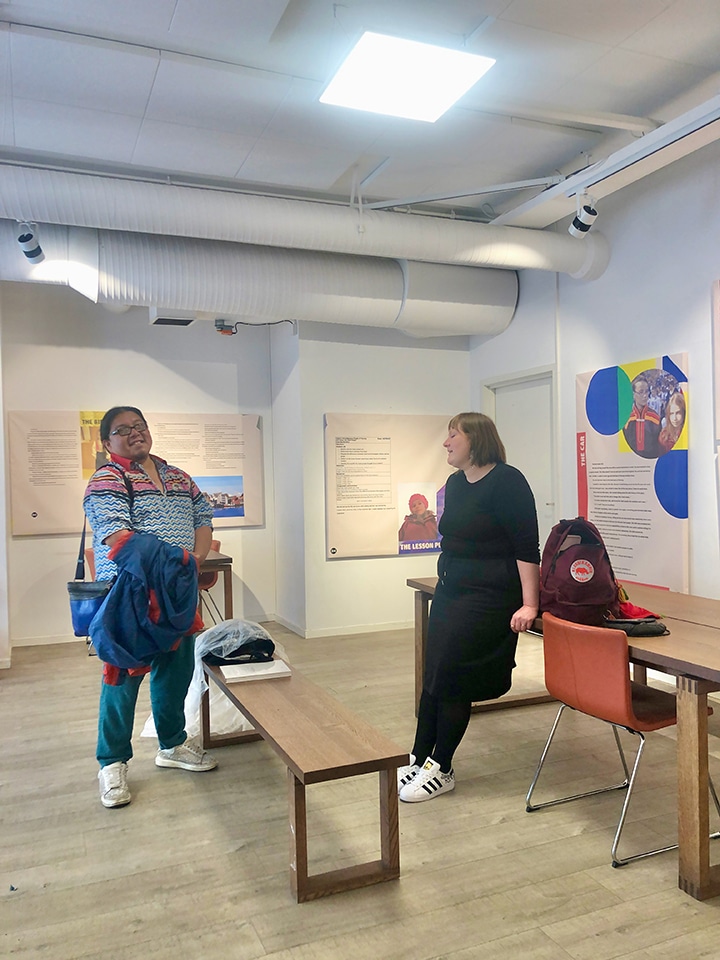
HJ: How did the residency take shape in Miami? Was it a similar format?
NF: Miami is the US capital for the commercial art market and private museum collections, so we did a lot of visits to private institutions as well as public institutions. We visited the Pérez Art Museum and met with curator Jennifer Inacio, and also had a Pride themed tour by arist Thom Wheeler Castillo. We received a tour of the Rubell Collection and from director Juan Valadez-Roselione. Melissa Warren, director of the de la Cruz Collection did studio visits with the artists. We went to Superblue, which is an over-the-top immersive art experience. We met with Gean Moreno who directs the Knight Foundation Art + Research Center at the Institute of Contemporary Art, and Stephanie Seidel, the curator at the ICA Miami. As a counterpoint to collector driven institutions, we went to an opening at Dimensions Variable, which is a great artist-run space, and facilitated activities with local artists, including programs developed by the Miami Based Heat Exchange artists.
Things were definitely complicated in Miami because the Delta variant started rapidly spreading while the program was happening. So we didn’t have quite the number of meetings that we hoped to have, but we still did a lot. We met with a lot of interesting curators, private spaces, and spent time trying to expose the artists to an art ecosystem that is wildly different from Norway.
HJ: In the texts describing Heat Exchange, the word ‘reciprocity’ appears several times. The obvious understanding of this is the logistical framework of the exchange, but did the concept of reciprocity expand in different ways towards how you worked with artists and/or how the artists worked with the cities or the communities they visited?
NF: Perhaps the most easily explained example is that when the Norwegian artists were in Miami, we asked all of the Miami-based artists that were part of the project to create an afternoon of activities in order to help the Norwegian artists better understand their lives and practices in Miami. We were invited into the lives of the artists. For example, we attended one of Loni Johnson’s Art Detective workshops at the Pérez Art Museum. It’s a daylong activity but we were there for the hour-long discussion at the end. We were moved to tears. In America, or at least in Miami, anytime that a police officer represents law enforcement, they have to go in uniform, which includes their gun. So even in an art workshop with teenagers, there was a loaded gun on the law enforcement officer’s belt. It blew all of our minds, especially the artists coming from Norway where police don’t carry guns, let alone carry a loaded gun in a room of youth doing arts and crafts.
Houston Cypress, as part of his project Love the Everglades, has a regular practice of bringing artists out to the Everglades via airboat so people can experience the environment first hand. So they took us via airboat to the Everglades, where we visited a Miccosukee tree island and exchanged stories, learned about mapping and science research the Miccosukee people are doing to help conserve nature in the Everglades, and experienced the land with deep listening and observation.
Misael Soto welcomed us to their studio, and then we visited the head of the Department of Sustainability for the City of Miami Beach to speak with her about what it was like to have an artist residency within the government, meeting in a conference room with residue of the recent government meeting’s notes still on the whiteboard…
And in Norway we made a similar effort to better understand the lives and practices of the artists in Norway. We took a train to Ås to witness a performance by Hanan Bennamar in an arboretum at a veterinary college, and have dinner with her afterwards. We spent so much time with Siri Borge. As both a collaborator and participant for the project, she wore multiple hats in addition to being an artist – she was also our guide and host and curated and scheduled most of our meetings in Norway. Of course we did a great studio visit with her where we learned more about her practice. There was clear-cut artist-to-artist reciprocity. It was more challenging with Máret since she lives in the far North. Unfortunately we were not able to get funding to visit her, but when we were in Oslo we got a preview of the new National Museum by Geir Haralseth, and were so thrilled to see her powerful artwork hung in the lobby, greeting all visitors with a statement about the Sámi people’s traditional land and animal rights. Overall we tried to have moments where each artist was able to spend time and witness the other artists in depth.
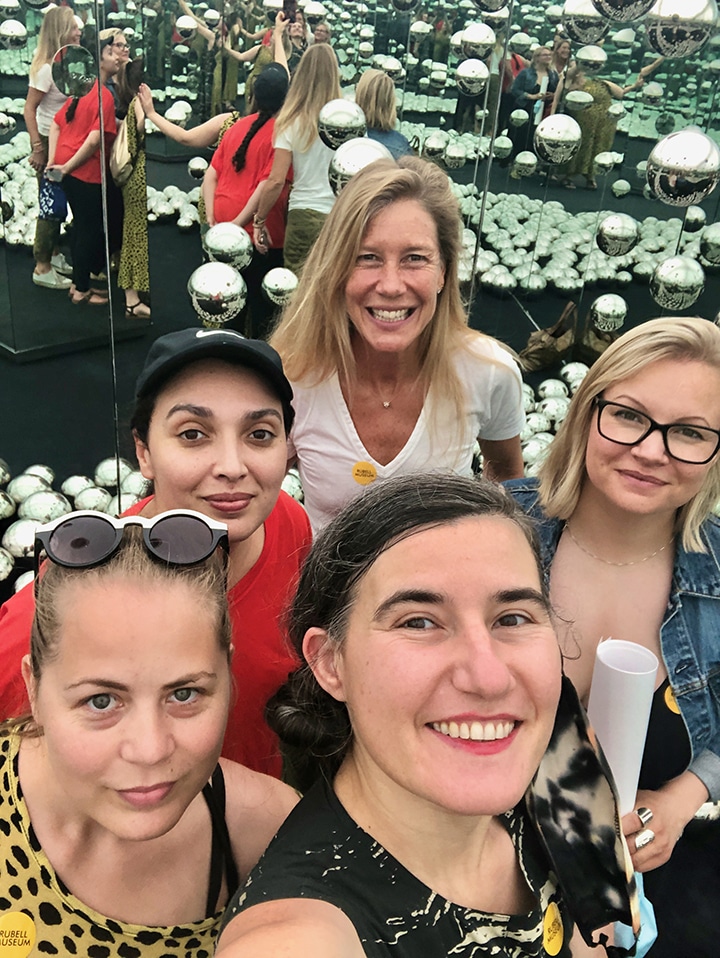
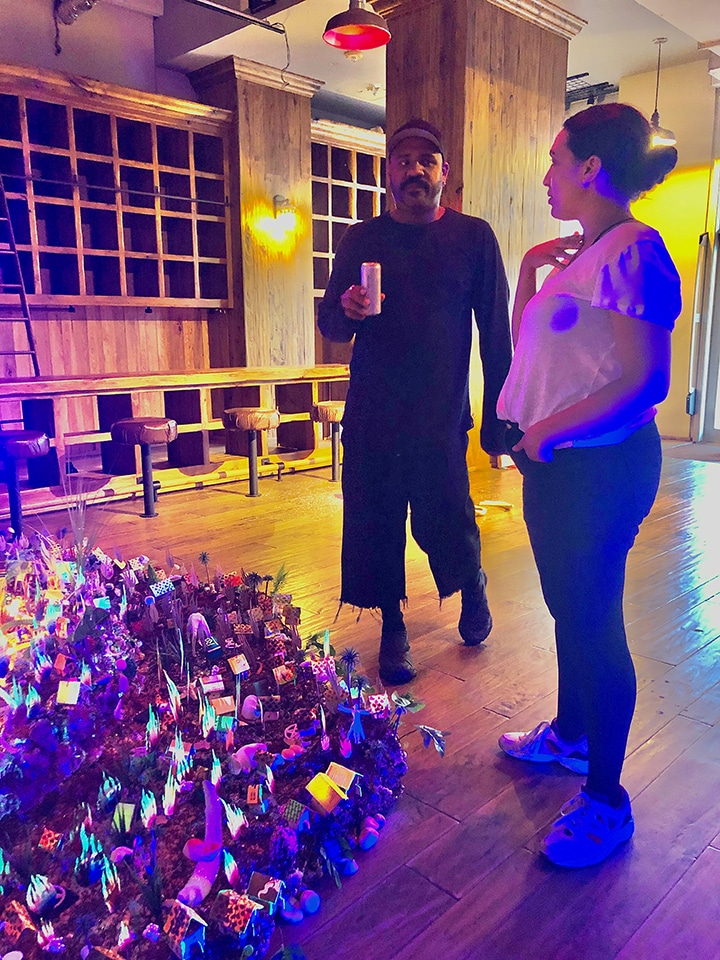
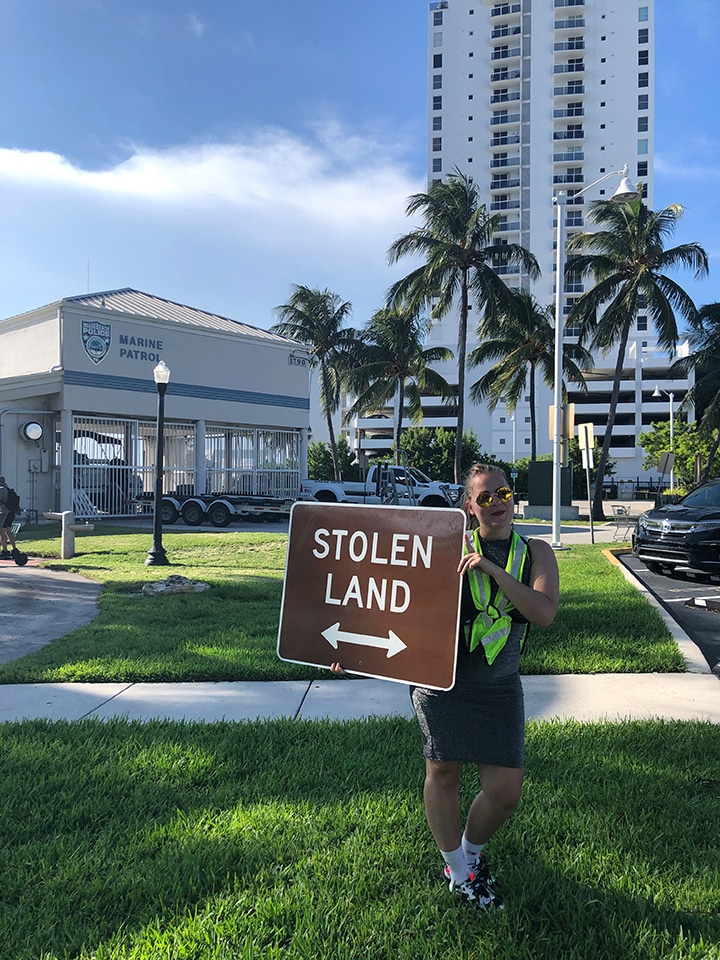
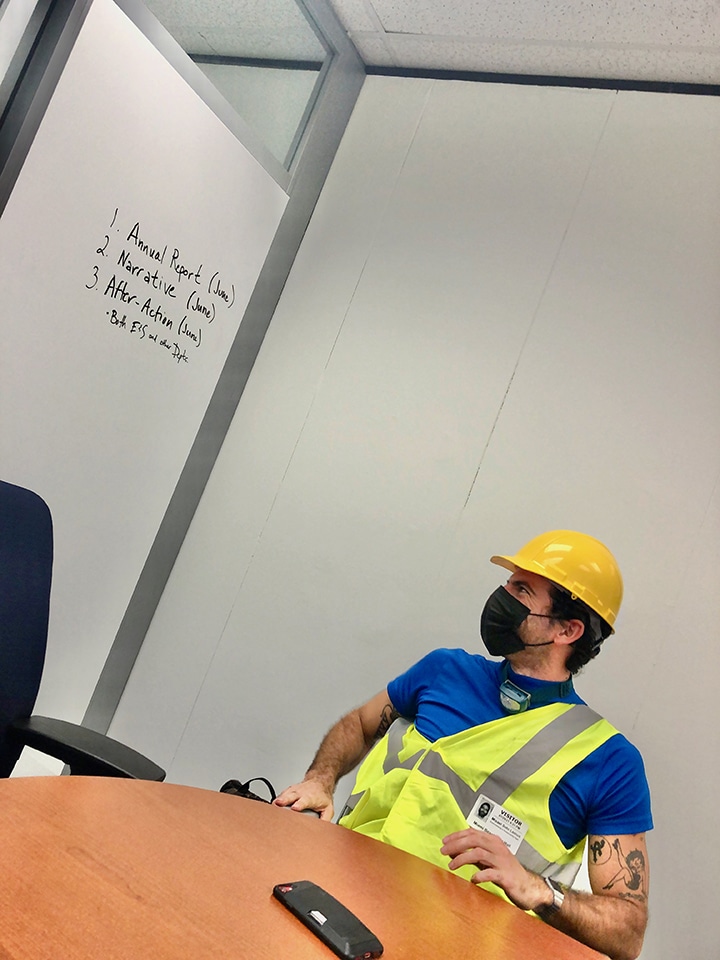
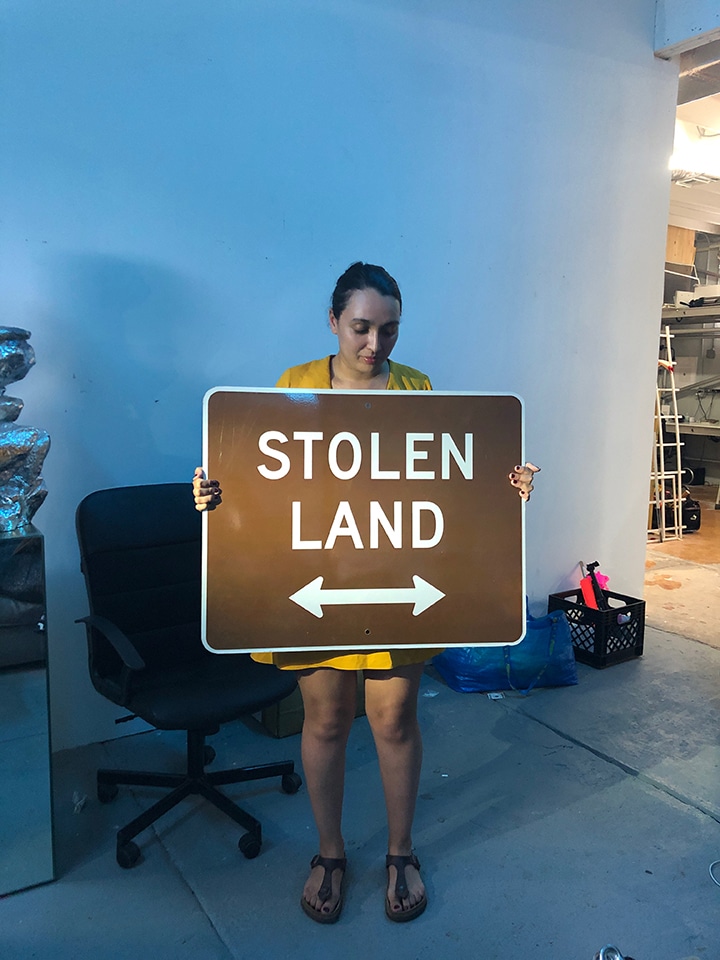
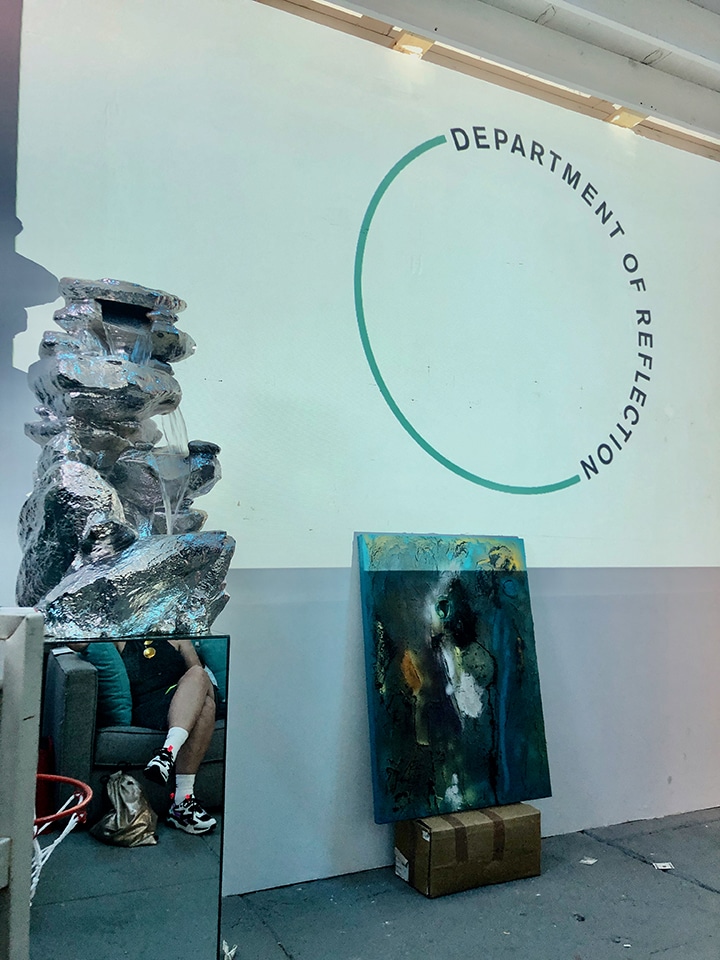
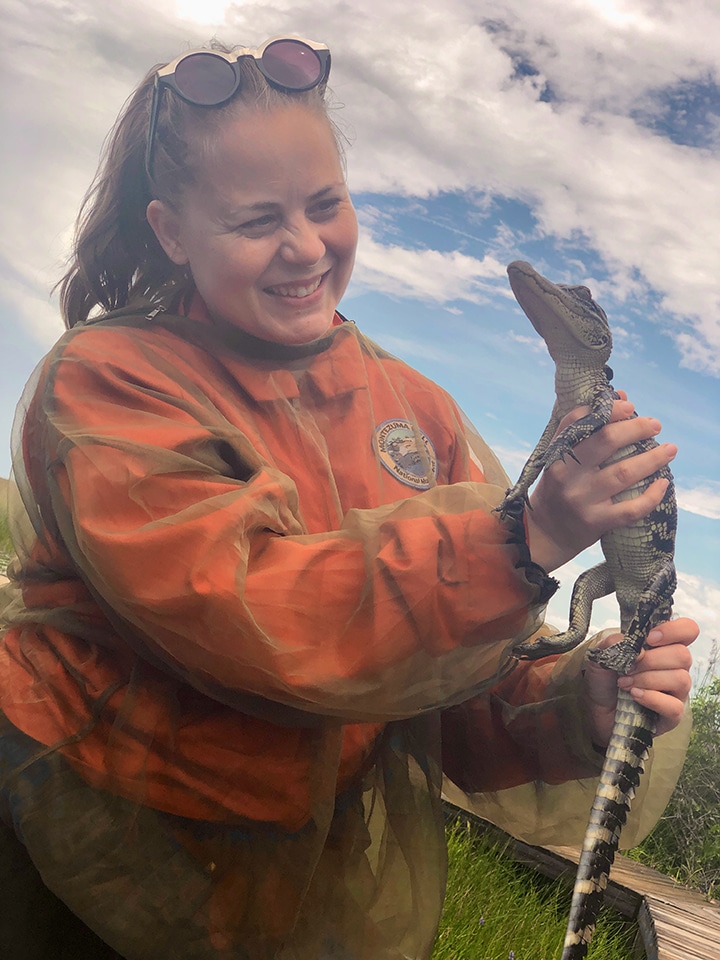
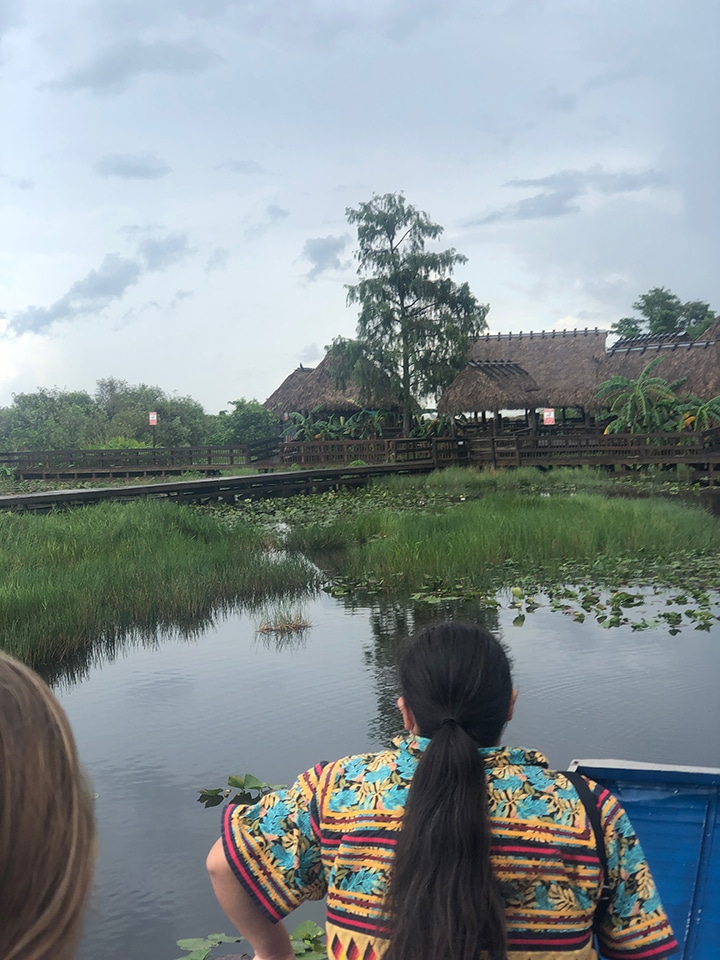
HJ: Since this was a pilot project, I’m curious to hear about the outcomes, expected or unexpected, of the residency.
NF: There are several. The three Miami artists were aware of each other prior to the residency, but they didn’t know each other personally. Now Loni Johnson and Houston Cypress have been talking about the possibility of bringing the youth she works with to the Everglades, and the youth from the Everglades to the city. They’re exploring how to continue to foster exchanges between these different communities that have different challenges in terms of how the government serves them and how they’re perceived.
One of the things that all of the Miami artists have been talking about is how we can use examples of unionization in Norway to create better collective action in the US, which is notoriously difficult to do. (WAGE has been one of the very few examples that have actually made measurable change.) How can we do this on a small scale with artists in Miami? There is real talk of trying to figure out ways to push change forward back in our own communities.
We had other plans in terms of outcomes, which did not come fully to fruition. We really wanted to do a symposium with all of the artists in one place, but due to all of the rescheduling of travel due to Covid-19, that wasn’t possible. We’re hoping to figure out some kind of online version of that in the future. But it brought about a great pivot – we were able to present a booth at the NADA Art Fair with artworks by all six of the artists. We were able to get enough funding for Siri Borge to come because she was invited to do a performance on the NADA stage, so that allowed us to bring at least one of the Norwegian artists back, but of course we wish we could have brought all of the artists together there. That said, I still think we did a miraculous job doing everything that we were able to do. At Nada, we held a panel discussion with Siri, me, Houston and Loni. That conversation was professionally recorded, and now lives online at both the Nada website and the BFI website. It felt good to be able to continue the discussions that were started during the residency, and have some of these elements recorded and available for the public.
HJ: Even as I ask that question, I realize that true outcomes of these kinds of projects are often subtle and can take years to reveal themselves.
NF: Yes! The impact of my 2014 residency in Stavanger is this new exchange program. And it happened over 8 years later! Heat Exchange is a very clear outcome of the powerful experience I had in Stavanger in 2014.
HJ: Right. And while we’re discussing outcomes, you mentioned that the point of the residency was simply research. Often residencies demand some kind of specific outcome from the artists, but that wasn’t required with Heat Exchange?
NF: No. The artists were selected based on the kind of work that they do, and understanding that this kind of research would tremendously benefit their practice, and conversely, that what they are doing would tremendously benefit the other artists and organizations that they’re meeting.
This is one of the ways that artist-run initiatives are so important. Often ideas that are outside of the norm happen when you consider what artists really need. I personally think residencies that are shorter than two months are not really enough time to make art. I don’t think that the time involved in the creation of art is acknowledged enough. There’s always an expectation that something that looks like art is going to come out of a very short period of time. When in actuality, settling in, meeting people, learning new things, is really the most generative outcome of a residency of this timeframe. Especially if you’re an artist that works with society and collaboration as a deep part of your practice, going so far outside of your comfort zone to a completely different arts ecosystem, being expected to immediately make art is too much.
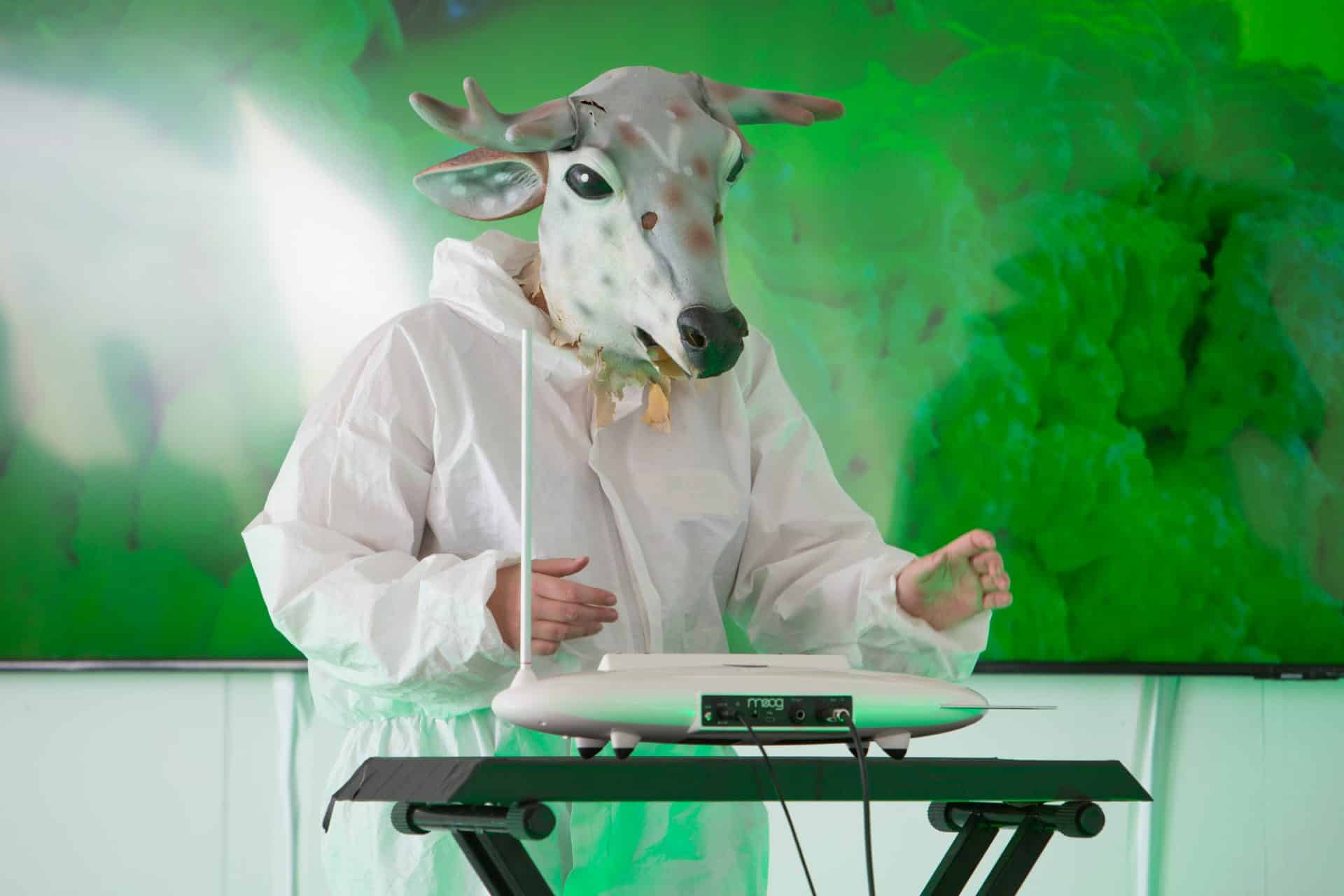
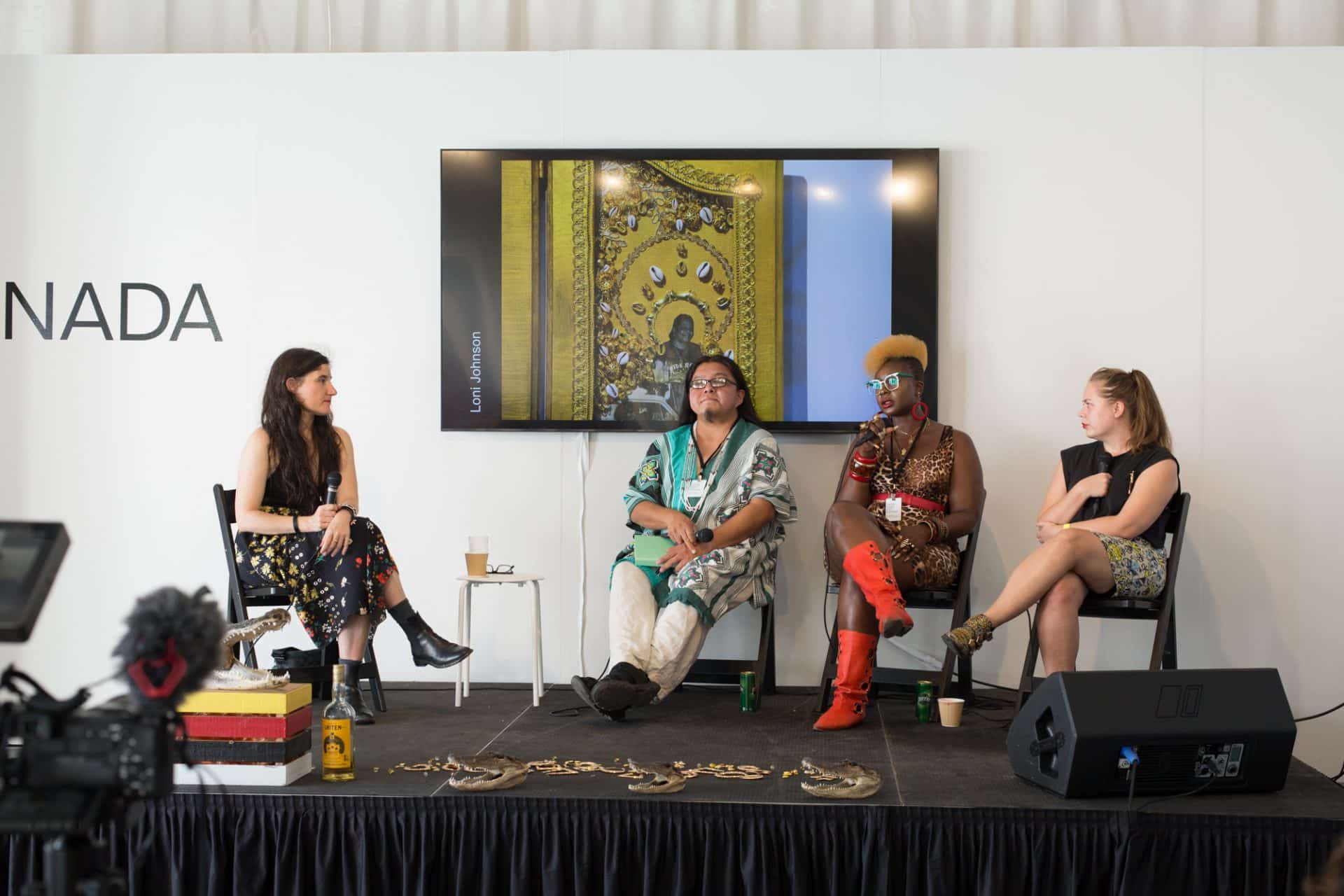

HJ: It’s interesting to think about what the artists are gaining, but also to flip the perspective and consider how the community is benefiting, what the hosting organization is getting in terms of reciprocity from these artists. It sounds like those exchanges were really generative in both directions.
NF: I definitely think they were. I think all of our minds have been blown. It’s been everything I hoped it would be and more.
HJ: Will the residency continue, and if so, do you imagine the format changing?
NF: It’s definitely continuing and we’re still trying to figure out how that might look. The final outcome will depend on how we do with fundraising, so it’s too soon to say exactly how the format will be affected. One of the shifts for next year is that it’s going to be two artists instead of three. Between logistics and the increased cost of travel after Covid, we reduced the number to two to really ensure that the artists are taken care of properly.
We’re also forming new collaborations, and so far plan to partner next year with Locus Projects, a residency in Miami. And I extended my stay in Norway to forge connections and find out where there are opportunities for greater partnerships. Especially working as a small artist-run space, with other small artist-run spaces, we have to see what we all are able to contribute. It can change drastically from year to year.
HJ: Yes! We are all learning lessons about having to be flexible and responsive in our programming, and how to allow plans to evolve according to the needs of everyone involved, including the organizations.
NF: We’re a very small organization. We don’t have a huge economy. But by creating partnerships and finding the cracks in the matrix, we’re able to make a very big impact. Flexibility is key to doing that.
HJ: Do you have any final thoughts you’d like to add?
NF: I think we’re in a moment in art where time, research, and exchange are more important than exhibitions. I have immense gratitude towards everyone involved in Heat Exchange that understood this. I also want to express gratitude for the many conversations I’ve had with Siri Borge and Geir Haraldseth that led to the idea for this residency project, and my many thanks to Jane Svederup and Rogaland Kunstsenter for adopting a project that was in the pipeline before she became the director, and really being such a strong champion for it, I look forward to future iterations steered by Jane and the Rogaland Kunstsenter!
Naomi Fisher (*1976) lives and works in New York and Miami. Over the past 20 years, her work has spanned painting, drawing, performance, photography, video, and site-specific installation, often in collaboration with dancers. Since 2004, Fisher has directed the W.A.G.E. certified 501c3 exhibition platform BFI (Bas Fisher Invitational). She has been the chair of the Visual Arts panel awarding and mentoring top high school art students with the National Foundation for YoungArts; lectures and does studio visits in schools like Princeton’s architecture program, Rogaland Kunstsenter, Norway; the University of Florida’s Visual Arts Program, and the CUNY photography program; and has been working on large scale public art commissions.
Fisher’s work has been exhibited internationally in such venues as the Palais de Tokyo, Paris; Halle fur Kunst, Luneburg; Kemper Museum, Kansas City; Kunsthalle Wein, Vienna; Kunsthaus Baselland, Basel; Vizcaya Museum & Gardens, Miami; and the Deste Foundation, Athens. Her work is included in the collections of the Hirshhorn Museum & Sculpture Garden, San Francisco Museum of Modern Art, the Museum of Fine Art Boston, the Rubell Museum and more.
**Heat Exchange was made possible through an International Cultural Partnerships Grant from the Miami-Dade County Department of Cultural Affairs, and funding through the Norwegian Ministry of Culture, through Arts Council Norway. Critical partnerships with the Fountainhead Residency in Miami, and the Rogaland Kunstsenter in Stavanger, enabled artists to live and work comfortably while on their residencies. Additional support for Heat Exchange was provided by a Knight Arts Challenge grant from the John S. and James L. Knight Foundation, the Andy Warhol Foundation, the Department of State, Division of Cultural Affairs, the Florida Council of Arts and Culture and the State of Florida, The Miami-Dade County Department of Cultural Affairs and the Cultural Affairs Council, the Miami-Dade County Mayor and Board of County Commissioners. Within Norway, Heat Exchange received support from the Rogaland County Regional, Culture and Business Committee, The Norwegian Ministry of Culture, through Arts Council Norway, Office for Contemporary Art Norway, and the Royal Norwegian Consulate General.


